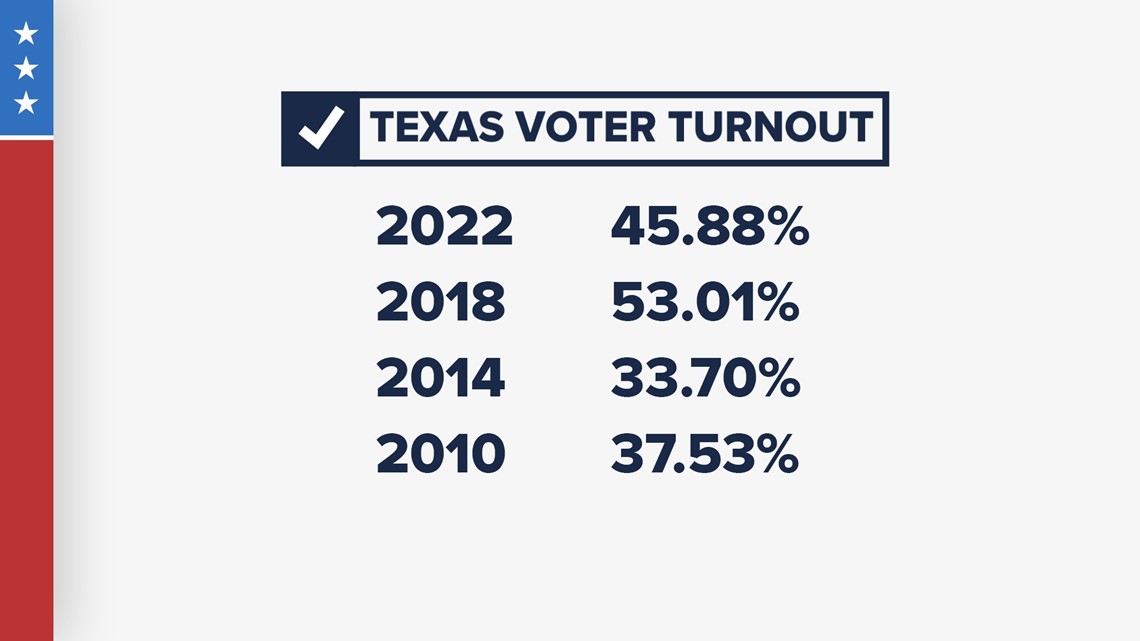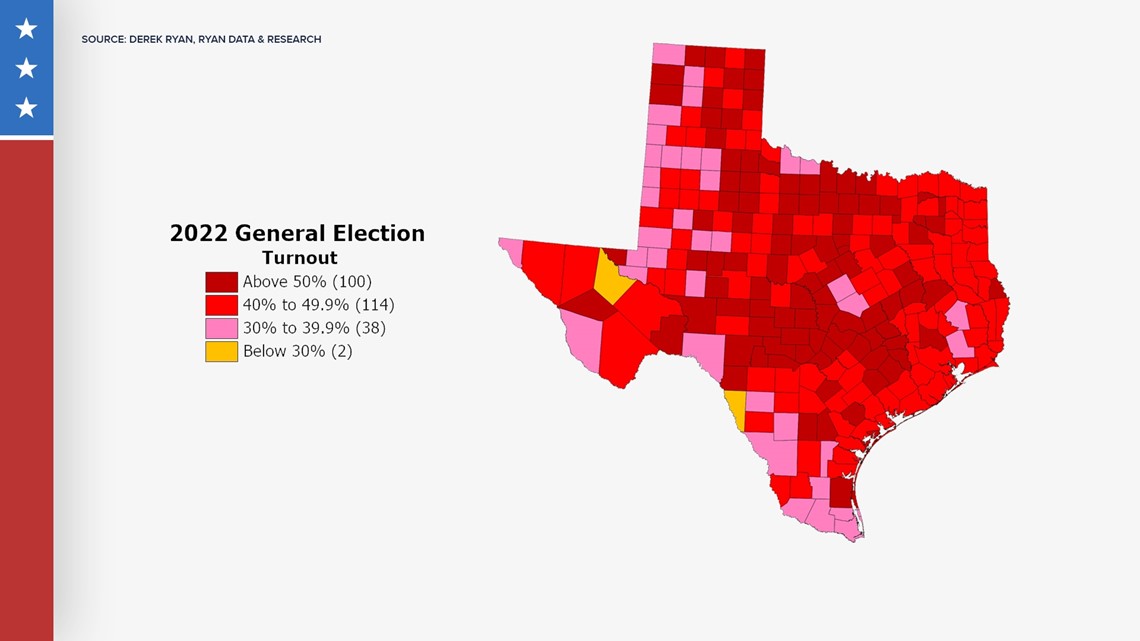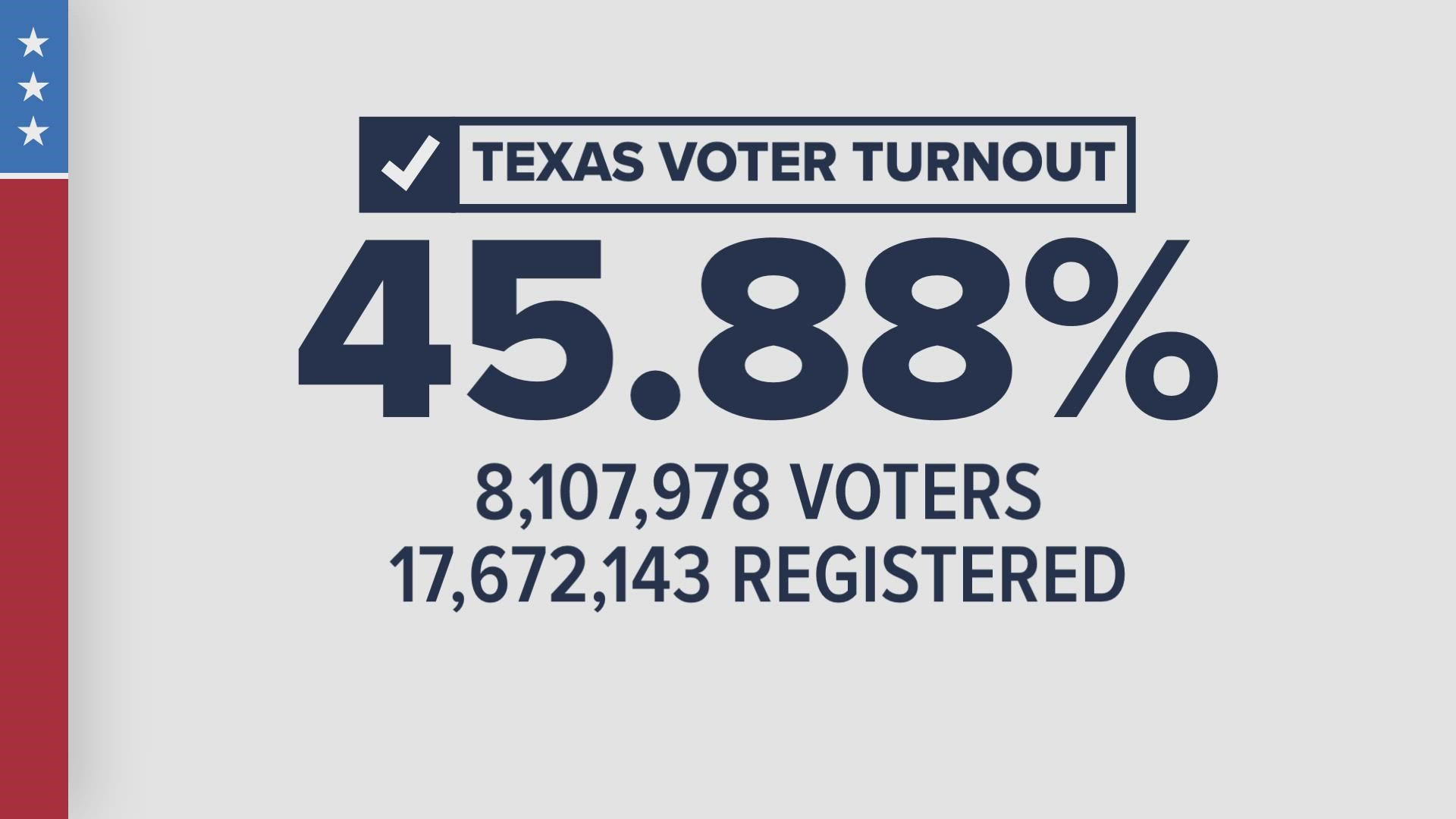AUSTIN, Texas — Less than half of the registered voters in Texas actually cast ballots in the Nov. 8 midterm election. Just abut 45.9%, or roughly 8.1 million, voted.
That's out of more than 17.6 million Texans who are registered to vote, meaning roughly 9.6 million eligible Texans didn't cast ballots.
This came as a bit of a surprise to some political observers. KVUE discussed the matter with Derek Ryan, founder of Ryan Data and Research, a strategic firm that helps Republican campaigns.
"I think it caught a lot of people off guard. Earlier this summer, there was talk about turnout being higher than it was in 2018, but maybe not reaching the levels we see in a presidential race. And then once the early voting got started, we noticed that the numbers were down," Ryan said.


Unfortunately, this is par for the course for Texas elections. The 2018 midterm was the first time in more than two decades that more than half of all the registered voters in the state actually voted.
Before that, it hadn't happened since 1994 – and even then, just 50.8% of registered voters cast ballots. In 2014 and 2010, voter turnout didn't even reach 40%.


Ryan created a voter turnout heat map that shows how different counties faired. The yellow on the map represents counties where turnout was less than 30%, while the dark red represents counties with 50% or higher voter turnout.
One hundred of the 254 counties in Texas had turnout in that higher range, including all of the counties in the KVUE viewing area except Bastrop and Caldwell counties. In those counties – and 112 others – turnout was between 40% and 49%


"Obviously both [gubernatorial] candidates wanted to target specific areas of the state. And Republicans were focused on South Texas, and turnout in some of the South Texas counties was up significantly from what it was four years ago," Ryan said.
"And what about Democrats?" KVUE's Ashley Goudeau asked. "Were they able to get out the voters that they were hoping to get out this election?"
"Yeah, I don't think so. When you look at Beto O'Rourke numbers from 2018, he got 4 million votes in his Senate race," Ryan said. "And this go around, he only ended up with 3.5 million votes."
Let's take a closer look at the heat map of O'Rourke's performance. It shows how much his support decreased in his run for governor compared to his 2018 run for U.S. Senate. His support only increased in one county. Everywhere else in Texas, fewer voters cast ballots for O'Rourke in 2022 than they did in 2018.


Meanwhile, the heat map below shows Gov. Greg Abbott's support. The dark red is where he had the most support and the dark blue is where he had the least. That dark blue square is Travis County, where the governor got less than 30% of the vote.
But Ryan said Abbott saw more support compared to his 2018 gubernatorial run, increasing his voter percentages in more than 200 counties.


"The big five counties, you know, that includes Dallas, Fort Worth, Austin, San Antonio, Houston. Those are typically – with the exception of Fort Worth – those are typically Democrat strongholds," Ryan said. "So, for Gov. Abbott to win [this] election, he needed to go after the suburban areas, which he ended up doing very well in. And he did even better in rural Texas."
Ryan said there was just a lack of enthusiasm among Democratic voters and maybe even some O'Rourke fatigue.
PEOPLE ARE ALSO READING:

